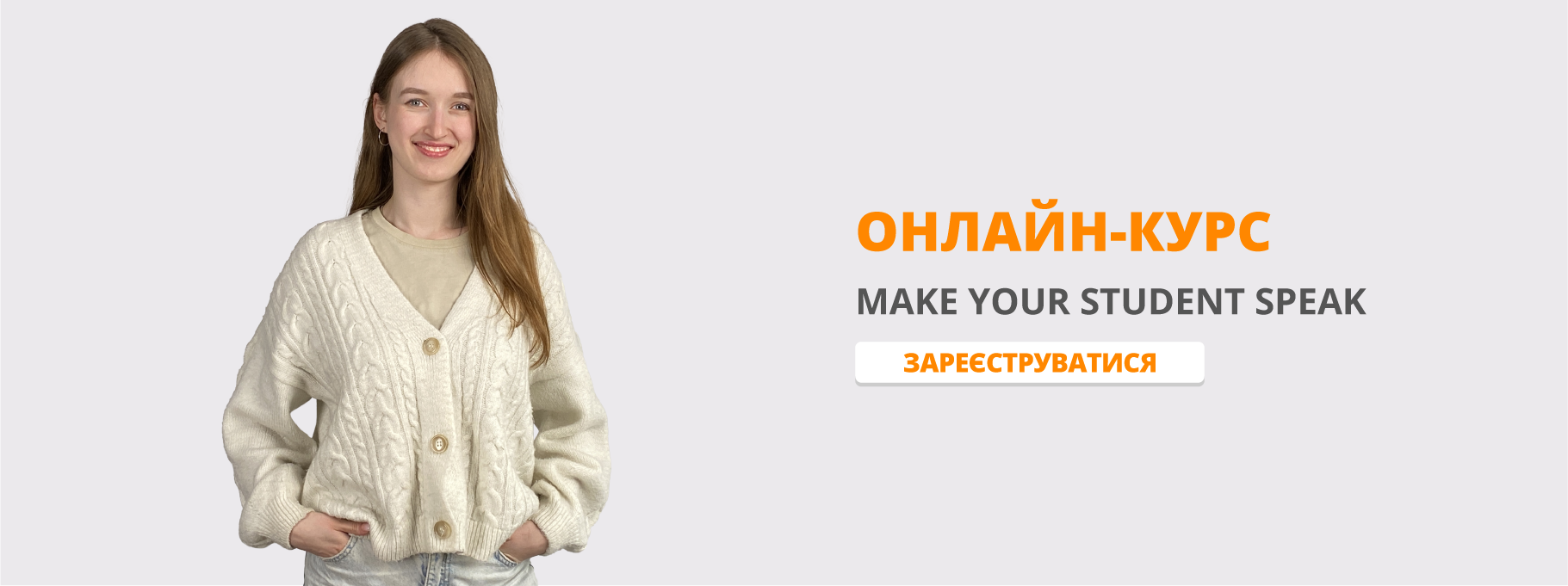Урок на тему : "Структура людського організму"
Розробка уроку на тему: “ Структура людського організму”
Мета:
Навчальна: навчати вільно висловлювати думку англійською мовою по темі «Людське тіло і його структура», опрацювати та активізувати лексику до теми, правильно вживати вивчену лексику, давати визначення понять та термінів з опорою на словник та здогад, давати відповіді на питання.
Практична: практикувати в монологічному та діалогічному мовленні за темою заняття; тренувати в підготовленому переході від однієї системи комунікації до іншої; закріпити лексику та фразеологічні звороти.
Розвиваюча: розвивати логічне та аналітичне мислення, творчу уяву та пам'ять, вміння працювати в групах, навички зв’язного мовлення; розвивати навички монологічного та діалогічного мовлення шляхом активізації вживання в мовленні відомих лексичних одиниць та граматичних конструкцій за темою заняття; удосконалювати фонетичні навички учнів формувати навички і вміння в різних формах мовленнєвої діяльності на англійській мові (читання, говоріння, перекладу і письма).
Виховна: виховувати культуру мовлення, старанне ставлення до навчання, повагу до думки одногрупників.
Обладнання: роздатковий матеріал до теми « Людське тіло та його структура» (індивідуальні завдання), копії з текстом та лексикою.
ХІД ЗАНЯТТЯ
- Introduction
1.1Greeting
T: Good afternoon students. I’m glad to see you/ sit down, please.
- The moment of organization
T: How are you today?
Who is on duty today?
What is the date today?
Is somebody absent?
What is your home task for today?
- Subject and aims of the lesson
T:The topic of our today’s lesson is “The Human body and its structure”. We will learn new words to the topic and speak about the structure of the human body. We shall get to know a lot of useful information about the human body. I’m convinced that the subject of our lesson will be of great interest for you.
So, I wish you to be active and attentive on this lesson.
- Warming up
Тongue twister competition.
T: I think it’s possible to start our work with a short phonetic drill. We’ll have tongue twister competition.
-
Peter Piper picked a peck of pickled peppers
A peck of pickled peppers Peter Piper picked
If Peter Piper picked a peck of pickled peppers
Where’s the peck of pickled peppers Peter Piper picked? -
Betty Botter bought some butter
But she said the butter’s bitter
If I put it in my batter, it will make my batter bitter
But a bit of better butter will make my batter better
So ‘twas better Betty Botter bought a bit of better butter
- Main part
2.1 Vocabulary
T: Read new words and their explanations, write them down.
External Body Parts
External human body names parts are fundamental in describing ourselves and others. Understanding these terms will enhance your ability to communicate about appearances, physical activities, and even emotions.
Head and Face
For those new to the English language, understanding the vocabulary of the head parts names is essential for daily communication. These terms will help you describe appearances and express yourself more accurately.
- Eye: the organ of seeing.
- Ear: the organ of hearing; responsible for detecting sound.
- Nose: used for smelling and breathing; it filters the air.
- Mouth: where food is taken in; used for talking and expressing emotions.
- Forehead: the front part of the head above the eyebrows.
- Eyebrow: the strip of hair above the eye; protects the eyes from sweat.
- Lip: the soft, rounded parts surrounding the mouth; used in speech and expression.
- Cheek: the sides of the face below the eyes; often associated with blushing.
- Chin: the bottom part of the face; helps in speech and chewing.
- Tongue: muscular organ inside the mouth; used for tasting and speech.
- Tooth: hard, bony structure in the mouth; used for chewing food.
- Jaw: the bones that form the frame of the mouth; holds the teeth.
Now that you've familiarized yourself with these terms, you'll find it easier to describe people's appearances or even symptoms if you're feeling unwell. Keep practicing these words to enhance your English communication skills.
Upper Body
The upper body parts and names are various and are crucial for daily activities and expression. Understanding arm parts, torso parts, and other terms will not only help you in medical contexts but also in daily conversation.
- Shoulder: the joint connecting the arm and torso; allows arm movement.
- Arm: the part extending from the shoulder; used for grasping and holding.
- Chest: the front part of the torso.
- Back: the rear part of the torso.
- Elbow: arm parts name connecting the upper and lower arm.
- Wrist: arm parts name joint connecting the hand to the arm; allows hand movement.
- Hand: the part of the human body at the end of the arm; consists of a thumb, four fingers, and a palm.
- Finger: digits extending from the hands; used for touching and holding.
- Thumb: the short, thick finger; used for grasping.
- Neck: connects the head to the body; supports the head and allows movement.
- Ribs: curved bones surrounding the chest; protect the internal organs.
- Abdomen: the area between the chest and lower body.
- Waist: the part of the body above the hips; often associated with body shape.
By learning these upper body terms, you've expanded your ability to describe the human body. Remember to use these words regularly to make them a natural part of your vocabulary.
Lower Body
The lower body vocabulary is essential for describing movement and physical activities. Knowing these words will help you communicate about sports, dancing, or simply how you move.
- Hip: the joint connecting the legs to the torso; the upper part of the lower body that supports body weight.
- Leg: the part that goes from the top of the lower body to the floor; used for walking and running.
- Knee: the joint connecting the thigh and lower leg; allows bending of the leg.
- Thigh: the upper part of the leg; supports body weight and movement.
- Foot: the lower part of the leg; used for standing and walking.
- Calf: the muscular back part of the lower leg; used in walking and running.
- Ankle: the joint connecting the foot to the leg; allows foot movement.
- Toe: foot finger; used for balance.
- Buttocks: the rounded parts of the body on which you sit; provide cushioning.
- Groin: the area where the legs meet the torso; contains reproductive organs.
- Heel: the back part of the foot; used in walking and standing.
- Shin: the front part of the lower leg.
Mastering vocabulary related to parts of the face is an essential step for language learners. It aids in understanding descriptions, expressing oneself, and enriching conversations.
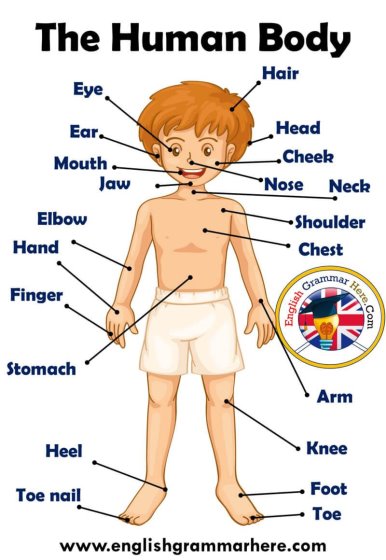
- Reading
The Human Body
The human body has three main parts namely: the head, the trunk and the limbs.
The head has hair and face. There are the ears on the both sides of the head. The eyes, the nose, the mouth, the lips, the cheeks and the chin compose the face. There are the teeth, the gums and the tongue in the mouth.
The neck connects the head to the trunk. The trunk is made up of the shoulders, chest, abdomen, back and buttocks. The waist is the thinnest part of the trunk. Inside our body are the heart, lungs, liver, stomach, intestines, pancreas, and kidneys and some other organs.
The limbs are divided into upper and the lower limbs. The upper limbs are the arms. The inner side of the hand is called a palm. On each hand we have five fingers. The leg composes of the thigh, knee, calf, foot and toes. The joint directly above the foot is called the ankle. There are nails on the fingers and toes.
Human body is made up of the body cells, tissues, organs and systems of organs. The human body is composed of different systems including the integumentary, skeletal, muscular, circulatory, respiratory, digestive, nervous, endocrine, lymphatic, urinary/excretory and reproductive.
You need to take care of your body. Practice good health habits. Eat the right kind of foo.
- Post-reading activity
T:It’s time to do some interesting exercises to our texts.
1) Answer the questions.
1. How many main parts are there in human body?
2. What are they?
3. What is there on the head?
4. What are the parts of the face?
5. What parts of the body are connected by the neck?
6. What internal organ do you know?
7. How many fingers has each hand?
8. Where are located lungs and the heart?
9. What is the structure of the human body?
10. In what way can you take care of your body?
2). Find the odd word out.
Eye – hair – hand – ear
Toes – eyes – fingers – nails
Hand – ear – eye – head
Palm- leg – knee – foot
Mouth – tooth – tongue – nose
Face – eyebrow – eyelashes – eye
Waist – back – leg – stomach
3). Fill in the blanks. Use the words in the brackets.
(teeth, neck, back, eyes, feet)
1. If your …… hurt, you should go to the dentist.
2. If you open your …… , you will see better!!
4. If you are very cold, put a woollen scarf around your …. .
7. Be careful not to injure your ….. when you lift something heavy.
8. You put socks on your …. .
4). Fill in the table.
How many ….s have you got!
Write the body parts in the correct column.
|
one |
two |
more than two |
|
|
|
|
|
|
|
|
|
|
|
|
|
|
|
|
Head, foot, arm, face, toe, back, mouth, eyebrow, tooth, nose, finger, knee, lung, heart, kidney, nail, hair, cheek, hand, shoulder, clavicle, eyelash, lip, nail.
5). Read and translate the following sentences:
- Listen to me attentively.
- Don’t touch your eyes with dirty hands!
- Open your mouth and say “Ah”.
- Brush your teeth and gums properly!
- Don’t bite your nails!
- Gargle your throat several times a day.
- Give me your arm to check your BP.
- Put a warm compress on your throat.
6). Translate the sentences into English.
1. Наше тіло складається з різних органів, які об’єднуються у системи органів. 2. Основні внутрішні органи – це серце, мозок, легені, печінка та шлунок. 3. Серце та легені розміщені у грудній порожнині. 4. Легені – це основні органи дихальної системи. 5. На кожній руці ми маємо 5 пальців.
6. Череп захищає мозок від травм. 7. У моєї сестри зелені очі і чорне волосся.
7) Learn the idioms with the parts of the human body.
Idioms are fascinating expressions that can add colour to language.
Here are 10 idioms related to the human body, along with their meanings:
- "Break a leg": a way to wish someone good luck, especially before a performance. The answer is “Thanks!”
- "Give someone a hand": to assist or help someone in their time of need.
- "Get something off one's chest": to confess something or talk about something that has been bothering you.
- "Have a heart of gold": to describe someone who is very kind, generous, and caring.
- "Keep an eye on": to watch or take care of something or someone carefully.
- "Put one's foot in one's mouth": to say something embarrassing, tactless, or inappropriate.
- "Cold feet": to suddenly become too frightened to do something you had planned, often something important.
- "Have a gut feeling": to have a strong belief about something without conscious reason; intuition.
- "Lend an ear": to listen carefully and attentively to someone.
- "Cost an arm and a leg": to be extremely expensive or overly costly.
These idioms can make your English sound more engaging. Try to use them in appropriate contexts, and they will add flair to your language skills.
8) Make up the sentences with the idioms.
9) Fill in the blanks with the words from the list, read and dramatize the dialogue.
Back, body, legs, limping, butt, feeling, to hear
A:"Hey Sarah. Why are you ……… ?"
B: "Oh. Hi Matt. I went snowboarding yesterday and my whole…… aches."
A: "Was it your first time?"
B: "Yeah. And I never want to go again."
A: "I remember the first time I went. My …… was sore, I couldn't sit down because it hurt my, ……. and my ……. would cramp if I walked too fast."
B: "That's exactly how I feel now."
A: "It's only like that the first couple of times."
B: "Ha. There won't be a next time."
A: "You have to give it a chance. It's fun after a while."
B: "I'll think about it after I start …… better. Right now, I don't even want …… the word snowboarding.
10) Put the sentences in the correct order and make up a short story. Think about the title of the story.
- Tonya was in the grocery store.
- She stepped into it, slipped, and fell hard on her back.
- She had a full cart at that point, which blocked her vision.
- Tonya didn't see a carton of milk had spilled out onto the floor.
- As she hit the ground with a "thud," at first she was just shocked.
- Tonya realized she'd been badly injured.
- Then the shock turned to horrible pain, stinging her back and side.
- A store attendant came to help her get back on her feet
- It was a relief at night, but by morning the pain had come back with a vengeance. Suddenly it hurt to lie down or get up.
- She was able to walk, but her whole upper body felt sore.
- Tonya had to leave her job, since she was unable to perform the work.
- Nothing made the pain go away.
- And she needed to focus on healing, anyway.
- The surgery went off without a hitch, and the family settled in for six weeks of recovery and six months or so of physical therapy.
9) Learn interesting facts about proportion of the human body.
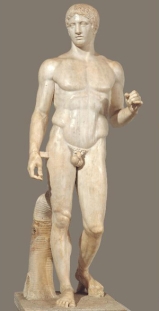 Throughout the ages, artists have been fascinated by the challenge of depicting accurate proportions of the human body. There have been countless attempts to standardize figure drawing proportions and lay down proportional rules to follow when depicting the body. Proportions are the relationships between the heights, widths and depths of a subject.
Throughout the ages, artists have been fascinated by the challenge of depicting accurate proportions of the human body. There have been countless attempts to standardize figure drawing proportions and lay down proportional rules to follow when depicting the body. Proportions are the relationships between the heights, widths and depths of a subject.
A Brief History of Proportional Canons. Every canon (system of measuring proportions) is a search for a certain ideal of beauty.
For example, the celebrated Greek canon created by Polycleitus defined a strong, male athlete who excelled at gymnastics and in the handling of weapons. A typical example of this canon is the Doryphoros, which is one of the best known sculptures of the Classical Era.
However, just as today there are few bodies that fit into current ideas of the “ideal” body, it is likely that few bodies in Polycleitus’ day fit the “ideal” body type of the Doryphoros as well.
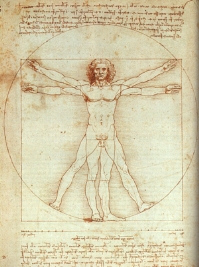 Another goal of canons is to establish a unit of measurement to divide the body into more manageable, measurable sections that would establish these “ideal” proportions. For example, in the oldest known text on proportion, which was an Egyptian canon, the length of the middle finger was chosen as the unit of measurement. It was thought to be equal to one nineteenth of the total height of the body.
Another goal of canons is to establish a unit of measurement to divide the body into more manageable, measurable sections that would establish these “ideal” proportions. For example, in the oldest known text on proportion, which was an Egyptian canon, the length of the middle finger was chosen as the unit of measurement. It was thought to be equal to one nineteenth of the total height of the body.
In the Greek canon by Polycleitus, the palm of the hand was chosen as the unit of measurement.
Marcus Vitruvius, a first-century BC Roman architect and writer, believed that the height of the figure was eight heads, or ten faces. Leonardo da Vinci demonstrated many of Vitruvius' ideas on proportion in the well known image of the man in two superimposed positions inscribed in a square and circle: the "Vitruvian man".
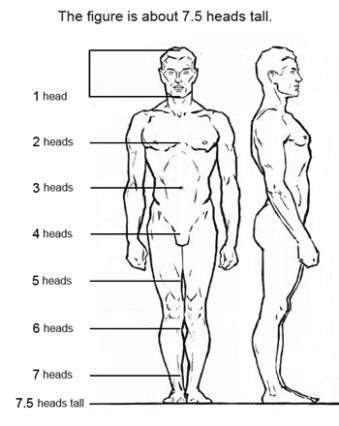
Proportional Canons of the Present Day. As you may have guessed, the search for a perfect measuring system is rather pointless. There is so much variation in bodies among individuals that it is impossible for everyone to fit
into any set of standards. The unique qualities of each individual are part of the challenge, complexity and fascination of depicting the figure. However: knowledge of a few general proportions can be helpful to our drawings if we use this
knowledge in combination with a sensitive observation of the model.
Today the most common unit of measurement is the head of the figure, and the figure is generally thought to be between 7.5 and 8 heads tall. (The head is also a first place to begin a figure drawing).
- Make up a short report or dialogue, using the facts from the text.
Imagine that your friend wants to draw the picture of the man and you give him/her information about right proportion of the body.
- Concluding part of the lesson
3.1 Home task: 1) learn new vocabulary and idioms; 2) make a dialogue using the learned material
3.1 Summarizing
T:At the end of our lesson I would like to summarize our work on it. I’m glad that you have a good knowledge of the learned topic, some of you were very active. And your marks are … Thank you, students, for your work and cooperation. I wish you to be hardworking students during next lessons and to have a good command of all subjects and especially English. The lesson is over see you next time. Goodbye.


про публікацію авторської розробки
Додати розробку
